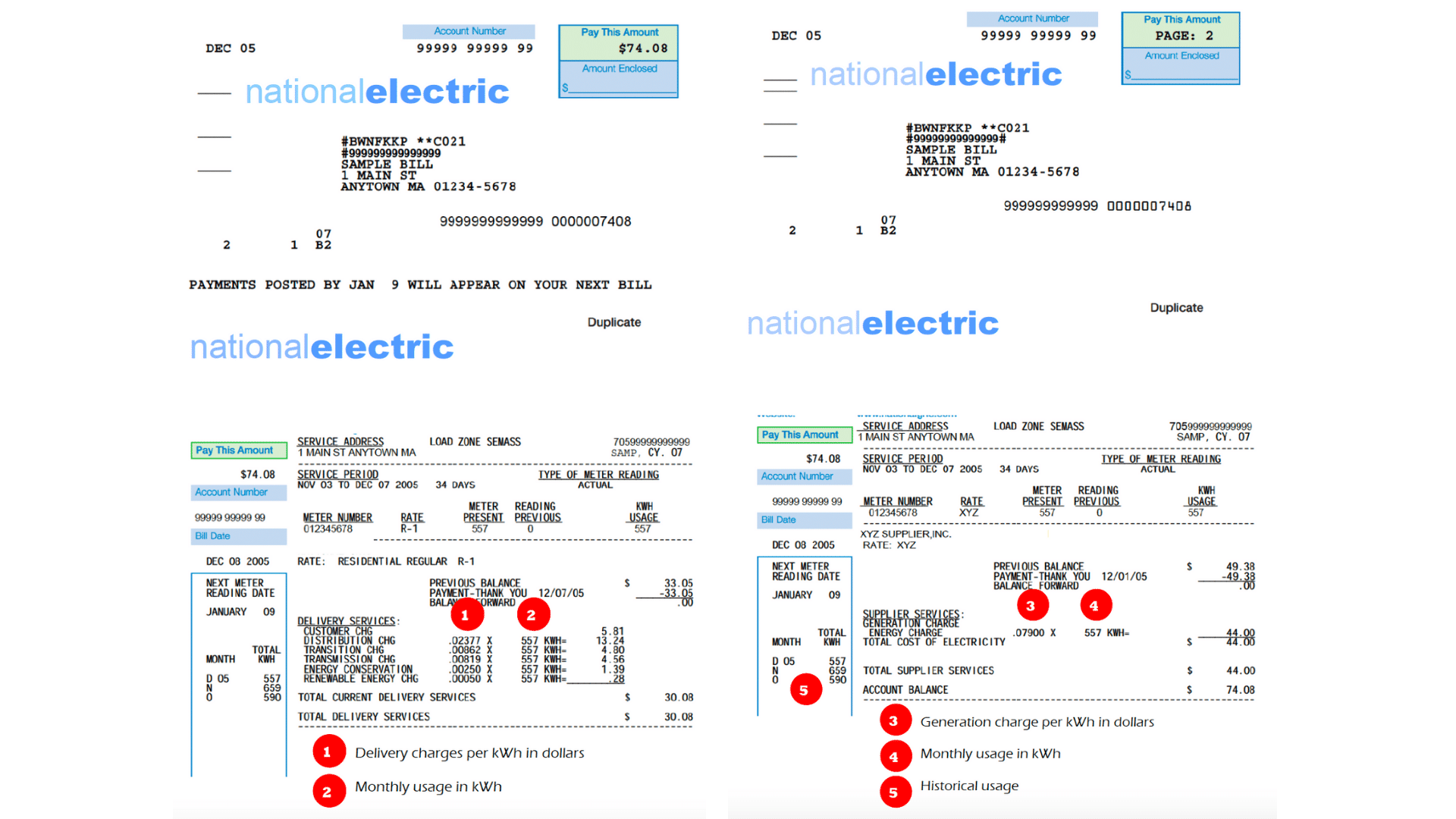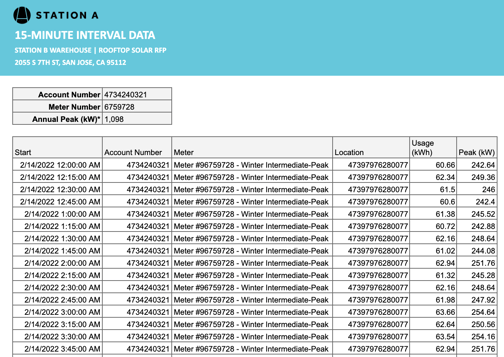One of the most important things when considering installing clean energy is how much of your current electricity supply you could offset and save through solar. This can only be done by understanding your site’s energy profile. Identifying the energy patterns of your building allows solar providers to determine where energy efficiency improvements can be made, size your solar system correctly, and estimate future bill savings.
While Station A's technology can provide an initial estimate of these values, having granular and actual data gives a more accurate and robust picture of your building's energy consumption.
Before listing a project on our marketplace, Station A's team of clean energy advisors helps your company collect the data that can help make this happen. Here is the information we help companies gather to do that.
🧾 Utility bills
12 months of electrical bills from your electrical utility gives a sense of the weekly and monthly patterns of your building's electrical consumption. This data is typically sourced in a spreadsheet format and includes the following columns: billing period start and end date, monthly energy consumption in kWh, and monthly bill cost in dollars.
📚 Rate tariffs
Your rate tariff or schedule is simply the plan your utility offers that outlines the specific pricing and rules behind your monthly bill. Typically, utilities can offer a variety of rate plans for the service required for your building type.
Identifying the rate plan helps you or your solar provider understand when you might be charged the most and where your solar can reduce or offset those charges. It also illuminates whether you should perform a rate switch - changing to a rate tariff that could be more advantageous with a solar system.
For example, some rate schedules are "Time-of-use" (TOU) rates, meaning they vary with the time of day and charge more when demand is higher (peak hours) and less when demand is lower (off-peak hours). Switching your energy consumption to periods of the day when electricity is cheaper or "net-metering" your surplus solar energy back to your utility during times of high demand can be advantageous, particularly if your PV system is paired with battery storage.

Electric bill. Image credit: Environmental Protection Agency (EPA)
To find your rate schedule, look for the words “Rate Schedule” or “Tariff” on your most recent utility bill. Note that your solar developer may recommend changing your site’s rate schedule after installing solar.
📊 Interval data
Interval data captures your energy patterns at a much more granular level. It can show your electricity consumption at 15, 30, or 60-minute intervals. This level of granularity can help your company in several ways:
- Shifting your energy usage to participate in demand response programs for financial incentives
- Selecting a more cost-effective rate tariff that matches your "load profile"
- Identifying areas where you can install energy efficiency measures
- Evaluating the project economics and optimizing the size of solar systems

8760 interval data with 15-minute time intervals.
How data is collected
Electrical consumption data is collected by electric meters. For a closer look at electrical meters and why they're important to your proposed clean energy project, see our article on "Documenting your property's electrical equipment" here.
Interval data is also captured by electric meters known as interval meters, which are either installed and tracked by your utility or self-installed as submeters on your property. You can download this data from your utility’s online portal. Your utility should also be able to give you your interval data upon request. Additionally, you can also obtain this data from a participating utility via the federal government’s Green Button program.
Bill PDFs, utility bill data, and interval data can be obtained in the following ways:
- Through your facilities manager. This person likely has direct access to the username and password for the site’s utility account.
- 3rd party energy management software. Organizations with large portfolios may use energy management software that allows you to export bill data directly.
- Through UtilityAPI. In the case that your utility is supported by UtilityAPI, Station A can extract the bill data on your behalf.
- Request via the utility. As a last resort, it is also possible to submit a Letter of Authorization to your utility directly, who can manually export bill data for you.
👋 Station A can help
If you're thinking about listing a project on the marketplace, provide high-level information to our clean energy advisors to start the process.